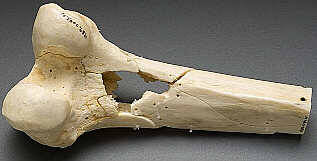Trauma professionals frequently have to leave bullets in patients. It is often more disruptive to go digging the projectiles out than to just leave them in place. But patients always want to know why and what the consequences might be.
In my last post, I discussed a very old paper on what we know about lead levels and retained bullets. Very recently, a meta-analysis was published that provides a better picture of this topic. They somehow managed to find over 2000 articles dealing with lead toxicity and bullets out there. But after someone had the pleasure of reviewing each of them, they found only 12 that had any meaningful or actionable information.
Here are the factoids:
- All studies were observational (duh! It would be difficult to get your IRB to approve a study where patients were shot on purpose)
- There were five cross-sectional studies, four case-control studies, and three prospective cohort studies
- The studies were small, with a median of only 26 patients (range 15-120)
- Eleven of the twelve studies showed an association with retained bullets and elevated blood lead levels
- Three studies showed elevated blood levels if a fracture was present
- The higher the number of retained fragments, the more likely lead levels were to be high
- Higher lead levels were associated with retained fragments near a bone or joint
- There were no good correlations with number of fragments and location vs actual lead toxicity
Bottom line: Even using meta-analysis, it is difficult to tease out meaningful answers to this question. That speaks to the low numbers of papers and their quality. However, this study does provide a little bit of guidance.
Retained bullet fragments are probably not a big worry in most patients. The bothersome cases are those where the fragments are in or near a bone or joint. And even though few patients actually developed lead toxicity, lead levels approaching 5 micrograms/dL can have physiologically significant negative effects.
Recommendation: If your patient has a retained bullet fragment near a bone or joint, or they have “multiple” retained fragments (no good definition of this), they should have blood lead levels measured every three months for a year. If the level is rising, and certainly if it reaches the 5μ/dL level, attempts should be made to remove the fragments.
Reference: Lead toxicity from retained bullet fragments: A systematic review and meta-analysis. J Trauma 87(3):707-716, 2019.

